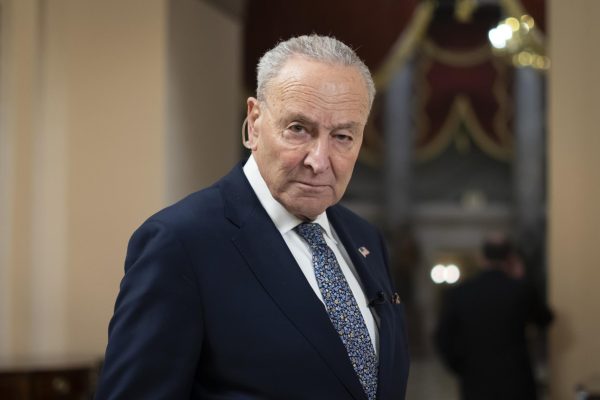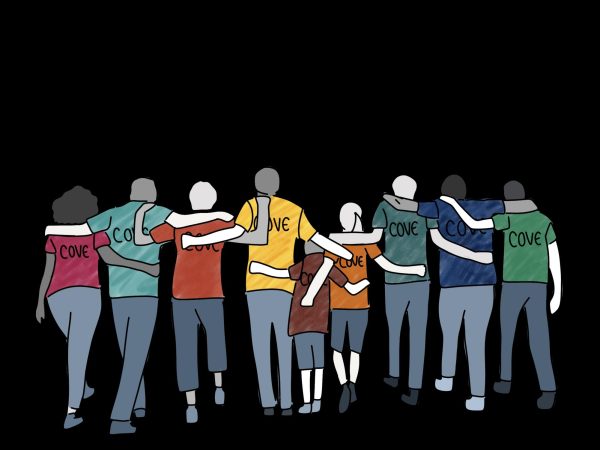Decades of Tension Culminate in Russian Invasion of Ukraine
During this past week, the developing situation in Ukraine has taken over everyone’s thoughts and enveloped the news cycle. However, the tensions between Ukraine and Russia have been building up since the end of the Cold War in 1991. After the collapse of the Soviet Union, Ukraine pledged to return the nuclear weapons it inherited from Russia through a treaty between the United States and Russia – the third most in the world at that time, according to The New York Times. But disarming Ukraine evoked some uneasiness in experts, who theorized that without nuclear weapons, the country would be vulnerable to attack, according to the same New York Times article. The security assurances they received in exchange for giving up nuclear power were – especially thinking about the current situation in Ukraine – empty. The Budapest Memorandum, which promised that Russia, the United States and Britain would not use force against Ukraine and would respect its sovereignty, and that Ukraine would be free to seek help from NATO if they faced violence, was signed in 1994, according to The New York Times. Ever since the Crimean invasion by Russia in 2014, calls within Ukraine to develop their own nuclear arms have risen.
Today’s tensions in Ukraine began with Russia’s invasion of Crimea eight years ago in 2014. This stemmed from Viktor Yanukovych, Ukraine’s president at the time, refusing to sign an association agreement with the E.U. Demonstrations in Kyiv against the decision culminated in dozens dying in Kyiv’s Independence Square on Feb. 20, 2014, according to CNBC. After Kyiv fell to a pro-Western force, pro-Russian rebel groups, along with Russian forces seized the Crimean peninsula, according to PBS. In March of 2021, Crimea voted to leave Ukraine and be absorbed by Russia in a referendum that the U.S. and other Western powers condemn as illegitimate, according to CNBC. In addition to Crimea, the Donetsk and Luhansk regions of eastern Ukraine also broke off from the country in 2014, inciting a war in the area, as reported by The New York Times.
The current Russian attacks on Ukraine are due to these historical factors and Russian President Vladimir Putin’s own agenda of amassing his own power and resisting that of the West. His rhetoric of insisting that Ukraine is part of and should be loyal to Russia because they are one people is used to justify his backing of separatists in the country’s eastern regions, according to PBS. The possibility of Ukraine joining the NATO alliance and the expansion of the influence of the United States and the rest of the West challenges Putin’s ideas of Russian power and security. According to Vox, when Putin sent a list of demands to NATO in 2021 as an attempt to stop their eastward expansion that would go against NATO’s open door policy, he became even more focused on Ukraine’s status when they were refused. Putin’s lack of respect for Ukraine’s sovereignty and identity as a separate nation and people sends a dangerous message about his thoughts about Russian expansion beyond Ukraine. Russian propaganda against Ukrainian President Volodymyr Zelensky’s government in order to destabilize the population also shows their true intent behind these current invasions, according to the same Vox article.
Since last year, Russia has been sending troops to the Ukrainian border all the while denying that they were there in preparation of an invasion, according to BBC. But, on Feb. 24, 2022, Russia sent troops into Ukraine from the north, east and south for what they maintain as “peacekeeping purposes.” Putin wants the end of the Zelensky government, which he claims is oppressive and reminiscent of the Nazi regime in Germany. These claims have been soundly denied by Ukraine, the United States and many others, according to BBC.
As Russian troops move towards Kyiv, they are faced with fierce resistance from the Ukrainian military, as well as the country’s citizens. The Russian military has hit important parts of Ukraine’s infrastructure and has seized the Chernobyl nuclear plant, according to Vox. At the time of writing, at least 198 Ukrainians have been killed and over a thousand have been injured, with over 4,000 Russian troops killed. About 368,000 Ukrainians have fled the country in the midst of bombings and Russian war crimes.
Russia’s attack and Putin’s justification for it make clear to the rest of the world his intentions behind the destabilization of Ukraine: To rebuild the Soviet Union. Ukraine, historically and culturally, is a major part of Russia’s ambitions for expansion and is likely the first step towards more violence. Russia’s nuclear power only makes any attempt at expansion more dangerous on a wider scale.
The question the U.S. and its allies face is how to respond. They have already imposed sanctions, according to Vox. They are, as of now, unwilling to provide troops to aid Ukraine. So, what comes next if diplomatic actions fail?

Samantha Wotring is a senior from Houston, Texas, majoring in English creative writing and history. She has previously served as an Assistant News Editor...





